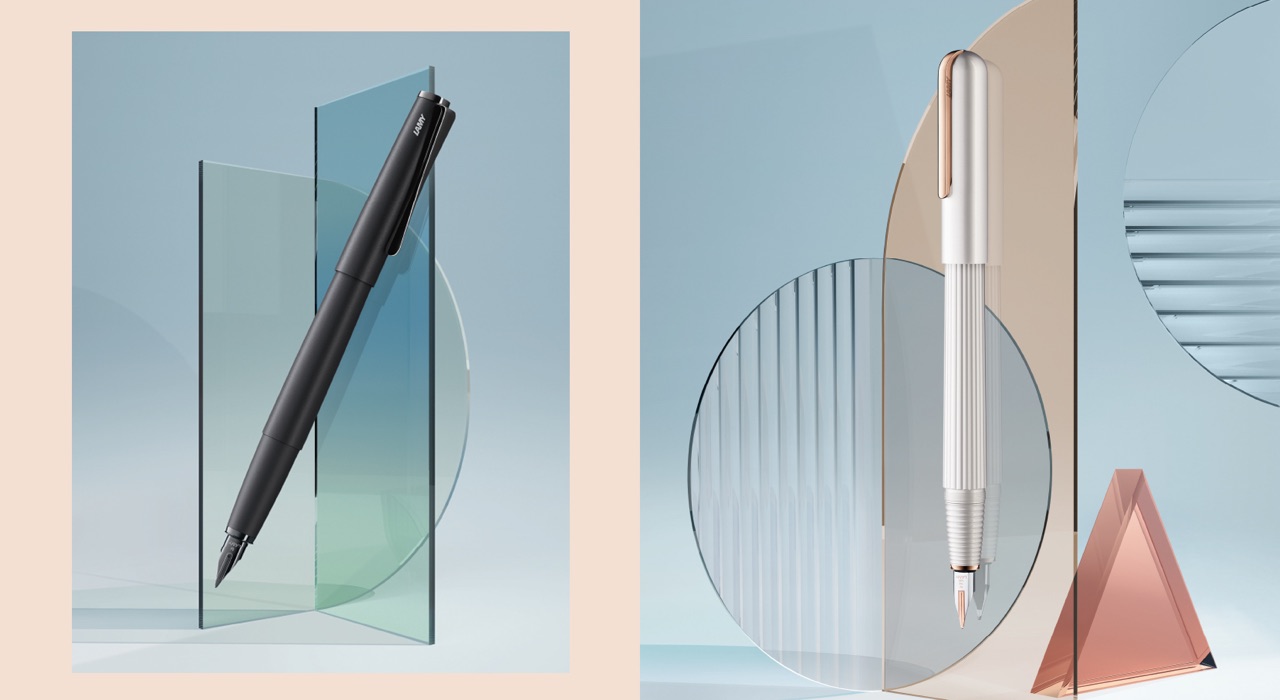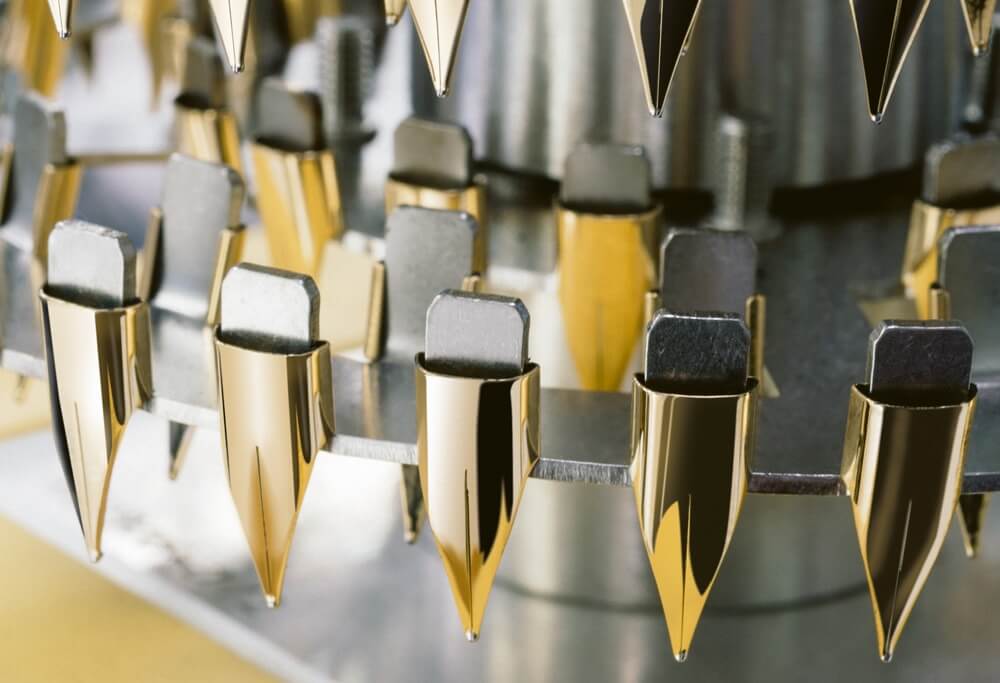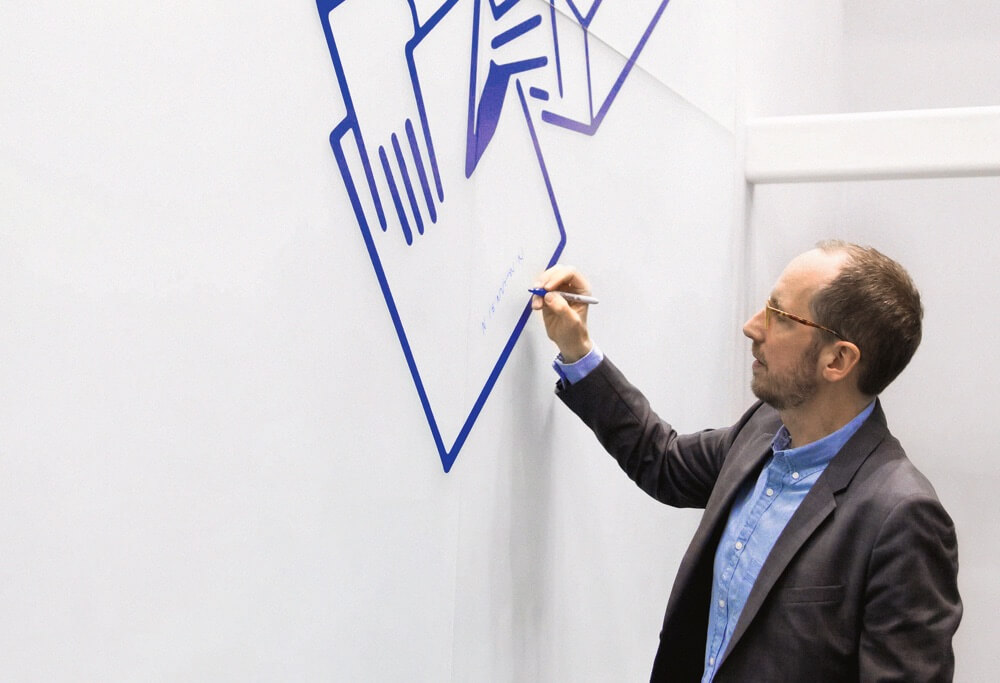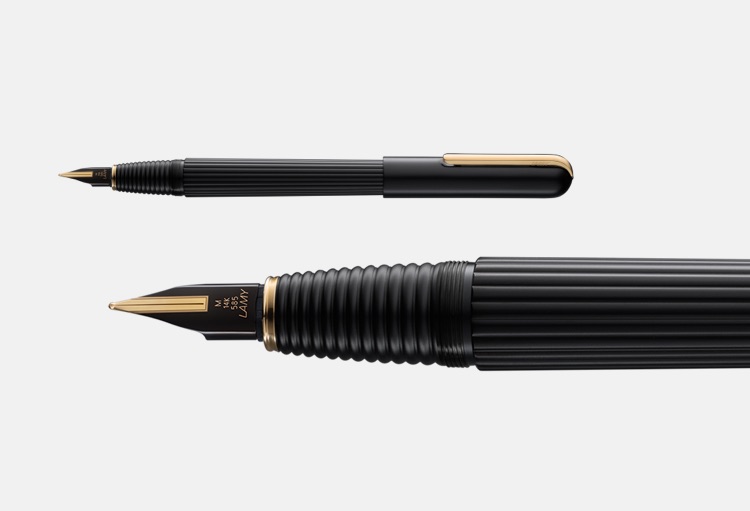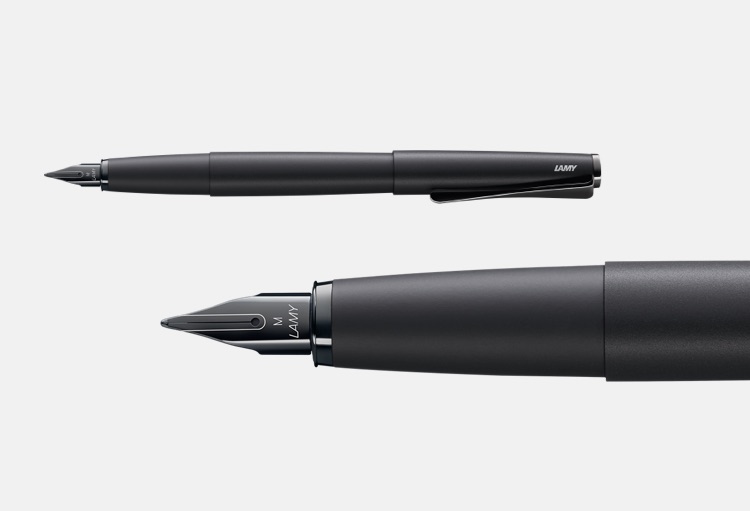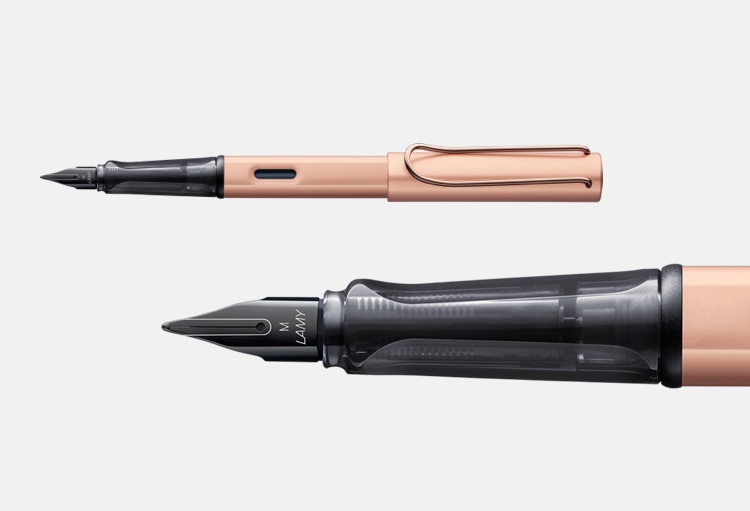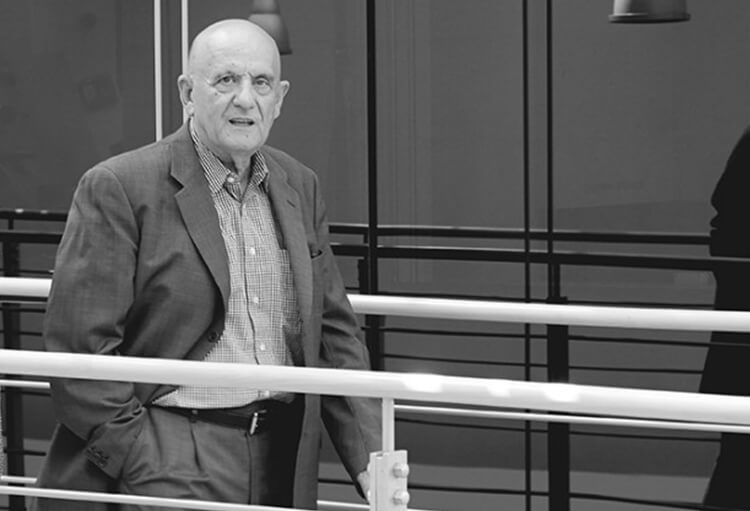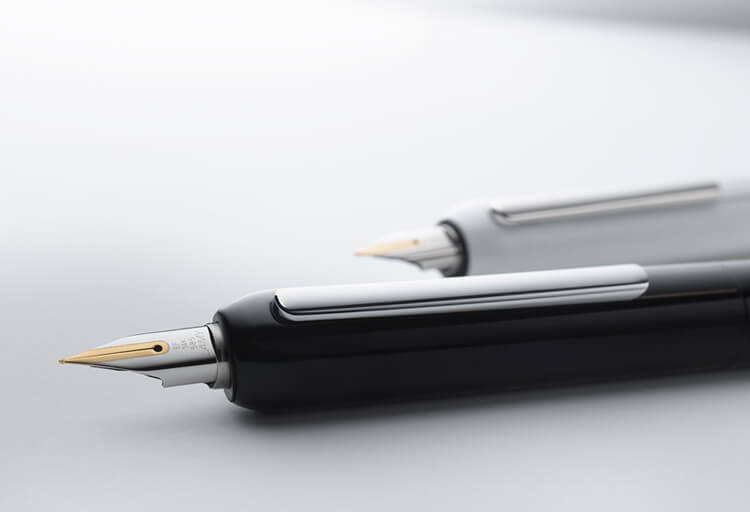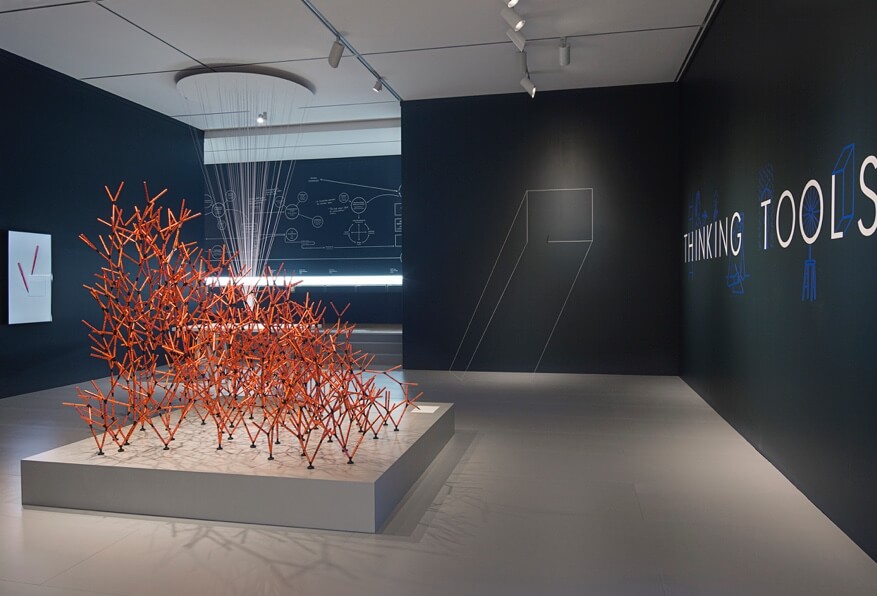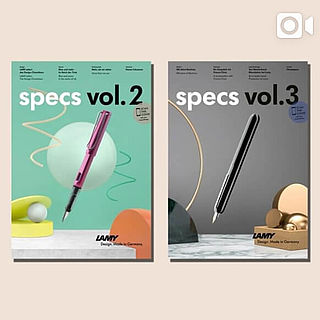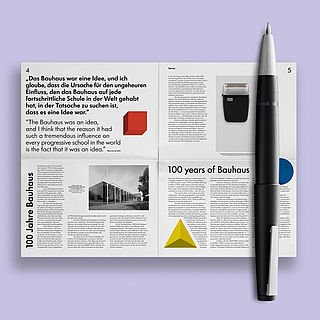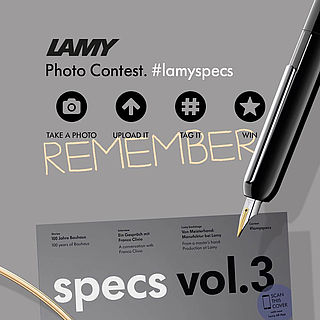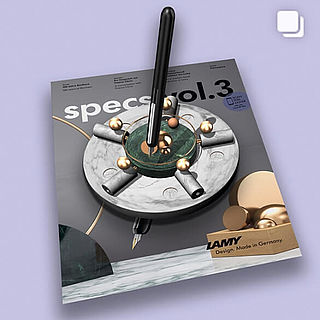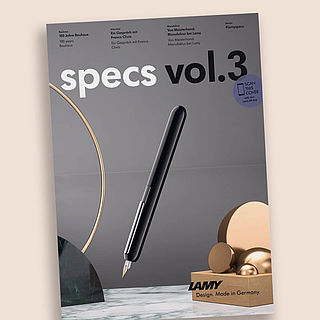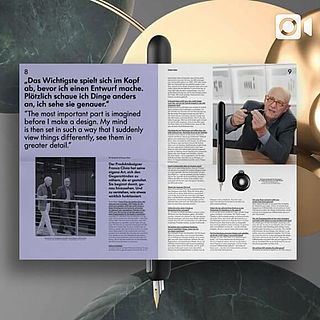In conversation with Beate Oblau and Marco Achenbach
How can a brand like Lamy continue to develop after forging a fixed identity for itself over more than five decades? How much can it change and how much can it allow itself to change? A discussion about innovation, values and the ability to change.

“not just a pen” – that is the slogan Lamy has used for the last few years to reposition itself and develop the brand. How has it stood the test of time?
Beate Oblau: “not just a pen” essentially marked a process of change in 2016 that we had been undergoing for some considerable time and which still continues. We live in a time in which handwriting plays a different role than 15 or 20 years ago. For us as a brand, this change demands that we, too, continue to develop and change how we see ourselves to keep up with the times.
What does that mean in concrete terms?
BO: For Lamy this means that a writing instrument today can be more, perhaps even must be more, than just a writing instrument. Digital technologies have made writing more efficient and have displaced hand- writing from many areas of our lives. For example, many people no longer send postcards when they are on holiday; instead they send a message on their smartphone.
Does that frighten us as writing instrument manufacturers? I don’t believe that there is any reason to be frightened and our development confirms this. Digitisation may have made handwriting rarer, but because it is rarer, it is that much more valuable.
And that also means that writing instruments have a whole new status. They have been transformed, at least in some areas of our lives, from a utility object to a luxury object. Or also to a type of accessory to help us express our individuality and lifestyle.
Marco Achenbach: In fact, we find that despite the omnipresence of tablets and smartphones, the demand for writing instruments is by no means declining. If at all, we are actually experiencing increased awareness of quality, high-grade materials and extraordinary design where writing by hand is concerned. That was the main reason behind the decision to strengthen Lamy’s product range in the upmarket segment.
Breaking into the luxury segment? How does that manifest itself?
MA: Primarily, the luxury segment enables us to use materials and processes which we normally cannot use in the lower cost segments. That offers us a whole new world of creative possibilities. This year, for example, we are launching two established models in new, particularly high-quality versions in the form of the LAMY imporium Lx and the LAMY studio Lx all black.
What makes these special models so extraordinary?
MA: Mainly, it is the high-quality finishes which set them apart from the standard versions. On the LAMY studio Lx all black all the shining attributes have been achieved with a PVD coating. That makes it extremely resistant and also creates extraordinary depth of colour. On the LAMY imporium Lx model, the housing parts have first been coated with pure silver and then galvanised with clear dip lacquer. The attributes are coated in platinum or rose gold.
Digitisation may have made handwriting rarer, but because it is rarer, it is that much more valuable.

Interaction between precious metals: the body of the LAMY imporium Lx rose is coated with pure silver with a galvanised finish and highlights in rose gold.
Can you tell us what the suffix Lx means?
BO: Lx stands for “luxury” and “luxurious”, but also a product promise which embodies lifestyle (L) and striving for something special (x). The Lx feature only appears on products which have been upgraded from the standard version, for example with precious metal coatings or other particularly high-quality finishes. We plan to expand this principle to other model series in the future.
The Lamy design philosophy is essentially based on functionality and understatement – characteristics which have very little to do with luxury ...
MA: Lamy has always had very high-quality writing instruments in its portfolio – ust think of models like the LAMY 2000, LAMY dialog 3, LAMY scala or LAMY imporium. But you are right that the majority of our products represent a very democratic approach. Lamy is synonymous with outstanding design which is functional, durable and in many cases also affordable for most people. These features will essentially remain in place with the Lx editions precisely because they are special editions. They will not be replacing our core portfolio, simply adding to it.
BO: And they will do so in a way which fits in with our design philosophy very well. It is a misunderstanding to claim that Lamy design is only functional, sober or even rational. In fact, our internal design guidelines have always stated that our products must include an emotional, sensual component.
MA: The basic shape is always based on functionality and on time-honoured design principles – such as the golden cut or symmetry. Beyond that, however, there is always scope for something that we call “dynamic innovation”. This is where extraordinary ma- terials and colours come into play, as well as special details such as the turned clip on the LAMY studio. It is precisely this interplay between formal strictness and innovation that makes Lamy so fascinating.
Let’s get back the subject of luxury. What does luxury mean from Lamy’s point of view?
BO: Luxury can have many different dimensions which do not necessarily have anything to do with the material value of an object. Even a particularly clever technical solution, which is not visible at first glance, can give the user a feeling of pure luxury. I’m thinking here, for example, of our pocket ballpoint pen, the LAMY pico. It is a small object which appears quite modest but actually features extremely refined technology which makes it incredibly pleasant to handle. These details definitely constitute a form of luxury in our view. But it is also the workmanship, the materials and the feel – all those are details which define how we experience a product and therefore make it special. That is luxury.
We have observed that these qualities, which have always been part of the Lamy brand DNA, are once again becoming more and more important today. This may also be a result of our lives being shaped to a large extent by technology. This has brought us some significant progress in all areas of our lives, but has also alienated us to some extent from what makes us human. That is why we spend our days looking for things which bring us back to earth and appeal to our senses. Beautiful objects which are pleasant to touch, like a writing instrument, definitely belong to this group.
It is precisely this interplay between formal strictness and innovation that makes Lamy so fascinating.

LAMY studio Lx all black
Let’s think 10 to 20 years ahead – what development do you see in handwriting?
MA: When I consider that critics have been forecasting the demise of handwriting for decades, I am very relaxed when I think of the future. After all, what has happened since then? Nothing, handwriting remains
a valued medium which some people are discovering all over again today. Because the drawback of handwriting is also its real strength – the lack of speed, which these days is a rare luxury. Writing by hand has a meditative component.
BO: But it also has extremely palpable benefits, for example when we want to learn and process information. There was a study conducted by Princeton University and the University of California Los Angeles a few years ago. They showed that students actually learn more efficiently when they make handwritten notes in lectures rather than typing away on their laptops. Why? Because doing things slowly forces them to compress and paraphrase what they are listening to. This means that they must deal with the content with a greater level of intensity while they are listening to it. Typing, however, creates a temptation to write things down word for word – often without really listening to what is being said.
Furthermore, our visual memory is linked to our motor memory. That is why we remember things better if we link them to a movement, like writing. And that is also why it is so important for children to learn handwriting, something that we are pushing heavily for, particularly in the German-speaking world. Digitisation aside – our society would be mad to give up such a valuable cultural treasure as handwriting voluntarily.
Are there any subjects or areas of innovation which Lamy intends to focus on in the future?
MA: We are in love with the fountain pen and still believe deeply in its attraction and its inspiration for the user. That drives us to continue to work on achieving outstanding design. And as we have said, we also believe there is great potential for Lamy in the luxury segment. In addition to analogue writing, however, we are also looking at the potential of digital writing.
Because the drawback of handwriting is also its real strength – the lack of speed, which these days is a rare luxury. Writing by hand has a meditative component.
Can you tell us any more about this?
MA: Only that Lamy is looking very closely at the subject and, as ever, is seeking the best possible solution.
